The jade plant (Crassula ovata), with its thick, glossy, deep green leaves and strong woody stems, is one of the most beloved houseplants around the world. Often called the “money plant” or “lucky plant,” it’s believed to bring prosperity and good fortune. But beyond superstition, jade plants are cherished for their hardy nature, longevity, and stunning appearance.
Whether you’re a beginner or a seasoned indoor gardener, this detailed guide will walk you through how to care for a jade plant effectively, ensuring it thrives and graces your home with its enduring beauty for years.
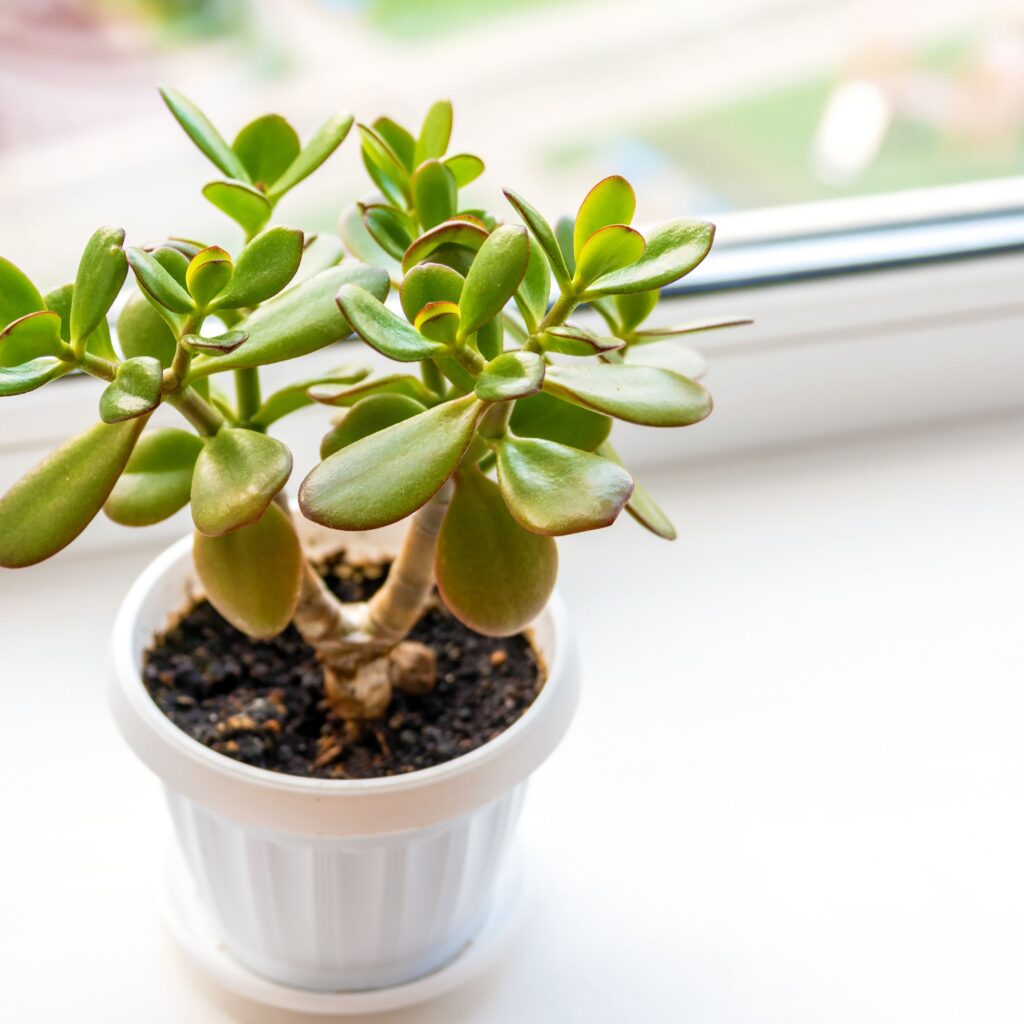
Getting to Know the Jade Plant
Native to South Africa and Mozambique, jade plants are succulents, meaning they store water in their leaves and stems. Thanks to their resilient nature, they’re perfect for busy plant owners and first-time gardeners alike.
Key characteristics of jade plants:
- Thick, fleshy, oval-shaped leaves
- Green leaves often tinged with red on the edges in bright light
- Woody, tree-like stems as they mature
- Can grow up to 3-6 feet tall indoors over several years
- Small pink or white star-like flowers in ideal conditions
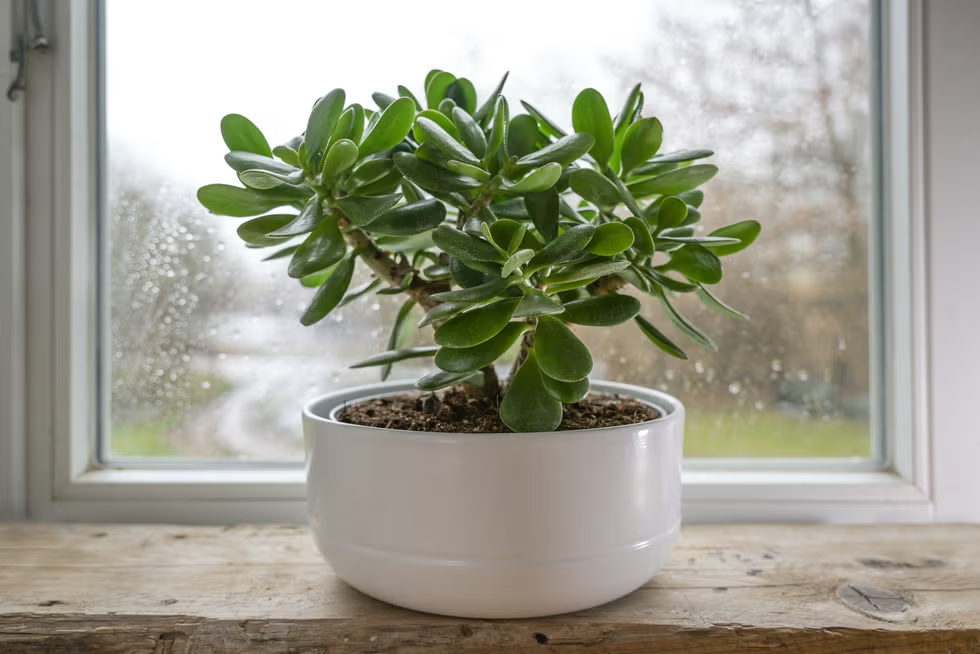
1. Provide Bright, Indirect Light
Light is one of the most crucial factors in jade plant care. Being a succulent, the jade plant loves bright light but can suffer from too much direct sunlight, especially in very hot climates.
Ideal lighting tips:
- Place your jade plant near an east-facing or south-facing window with bright, filtered sunlight.
- If indoors, a spot where it receives at least 4–6 hours of indirect light daily is ideal.
- Rotate the plant occasionally to ensure even growth.
- In winter, move the plant to the sunniest window possible to compensate for reduced daylight.
Pro tip: If the leaves start turning yellow or scorched, it’s a sign of too much direct sun.
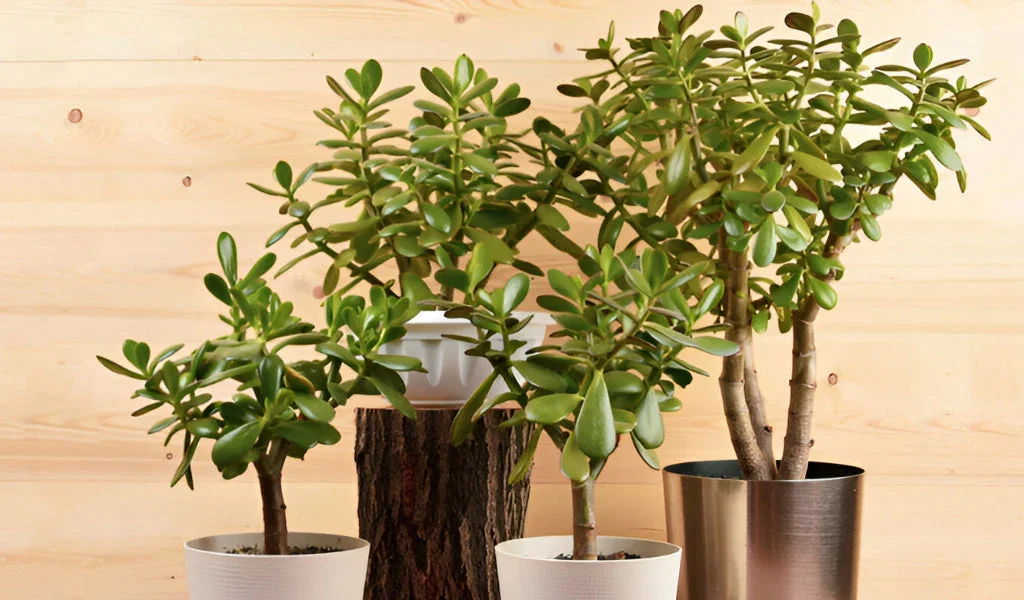
2. Master the Art of Watering
Jade plants prefer to be kept on the dry side. Overwatering is the most common cause of jade plant problems like root rot.
Watering guidelines:
- Water thoroughly, allowing water to drain out of the bottom of the pot.
- Wait until the top 1–2 inches of soil feel completely dry before watering again.
- In winter, when the plant is dormant, reduce watering to once a month or less.
Avoid: Letting the plant sit in water-filled saucers, which can lead to root rot.
Signs you’re overwatering:
- Yellowing, mushy leaves
- Leaf drop
- Soft, blackened stems
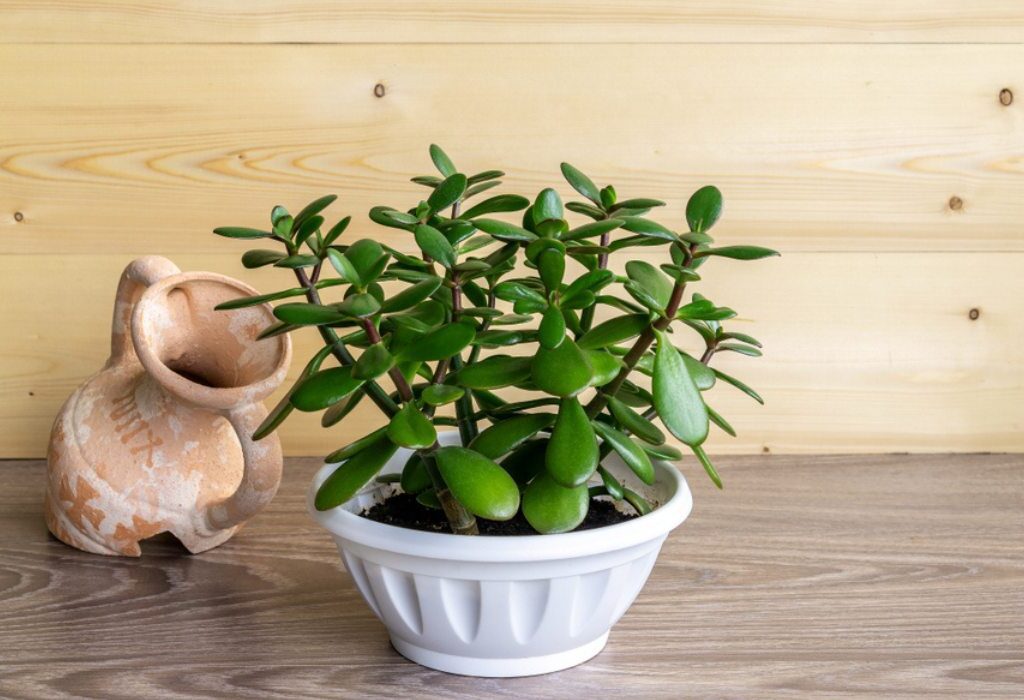
3. Choose the Right Pot and Soil
Since jade plants dislike soggy conditions, using the right pot and soil mix is essential.
Pot selection tips:
- Use terracotta or clay pots with drainage holes, as these materials absorb excess moisture.
- Avoid decorative pots without drainage holes.
Best soil mix:
- Use a well-draining succulent or cactus soil mix.
- You can also mix regular potting soil with sand, perlite, or pumice in a 2:1:1 ratio.
Proper drainage is crucial to prevent water from lingering around the roots.
4. Maintain Optimal Temperature and Humidity
Jade plants prefer moderate, stable temperatures and are quite sensitive to cold.
Temperature preferences:
- Daytime: 65–75°F (18–24°C)
- Nighttime: Not below 50°F (10°C)
Humidity:
- Jade plants adapt well to typical household humidity levels (30–50%).
- No need for misting or extra humidity — dry indoor air suits them fine.
If you move them outdoors in summer, bring them inside before nighttime temperatures drop below 50°F (10°C).
5. Feed During the Growing Season
While jade plants aren’t heavy feeders, occasional fertilizing during their active growth period helps promote lush leaves and healthy roots.
Fertilizing tips:
- Feed once a month from spring to early fall.
- Use a balanced, water-soluble houseplant or cactus fertilizer diluted to half strength.
- Avoid fertilizing in winter when the plant is dormant.
Too much fertilizer can cause excessive growth and weak stems.
6. Prune to Shape and Encourage Growth
Jade plants naturally grow into lovely bonsai-like shapes, but occasional pruning helps manage their size, improve air circulation, and encourage new growth.
Pruning guidelines:
- Use clean, sharp scissors or pruning shears.
- Remove dead, shriveled, or leggy stems.
- Trim just above a leaf node (the place where a leaf grows from the stem).
- Pruning in early spring or summer encourages bushier, compact growth.
You can even propagate cuttings easily (more on that shortly).
7. Repot Every 2–3 Years
As jade plants grow, they may outgrow their pots, or the soil may become compacted and poorly draining.
Repotting tips:
- Repot every 2–3 years in spring.
- Choose a pot 1–2 inches larger in diameter.
- Remove the plant gently, shake off old soil, and trim any dead or rotted roots.
- Replant in fresh, well-draining soil.
Allow the plant to dry for a day before watering after repotting to prevent root rot.
8. Watch for Common Problems
While jade plants are tough, they’re not immune to issues. Regularly inspect your plant for signs of trouble.
Common problems:
- Root rot: Caused by overwatering. Remedy by trimming affected roots and repotting in dry soil.
- Mealybugs and spider mites: White cottony spots or webbing. Wipe leaves with a cloth dipped in rubbing alcohol or use insecticidal soap.
- Leaf drop: Usually a sign of overwatering, sudden temperature change, or low light.
Early detection and correction are key.
9. Propagate New Plants from Cuttings
One of the joys of owning a jade plant is how easy it is to grow new plants from cuttings.
Propagation steps:
- Use clean scissors to cut a healthy leaf or stem.
- Let the cutting sit for a day or two to allow the cut end to callous.
- Plant in well-draining soil mix.
- Lightly water after a few days.
- Keep in bright, indirect light.
New roots should develop within a few weeks, and you’ll have a brand-new jade plant to keep or share!
10. Encourage Blooms (With Patience)
While jade plants grown indoors don’t flower often, it’s possible under ideal conditions.
To encourage blooms:
- Provide bright, consistent light year-round.
- Allow a cooler, dry rest period in winter (50–55°F/10–13°C at night).
- Avoid overwatering in winter.
- Resume regular watering and feeding in spring.
With time and care, mature jade plants may reward you with clusters of tiny, star-shaped white or pink flowers.
Final Thoughts
The jade plant is a resilient, attractive, and meaningful houseplant that rewards good care with years — even decades — of growth and beauty. By following these 10 effective care tips, you’ll ensure your jade plant stays healthy, vibrant, and maybe even a symbol of good fortune in your home.
Whether you’re nurturing a new jade or tending to an old, cherished plant, these guidelines will help it thrive as a beloved part of your indoor garden.

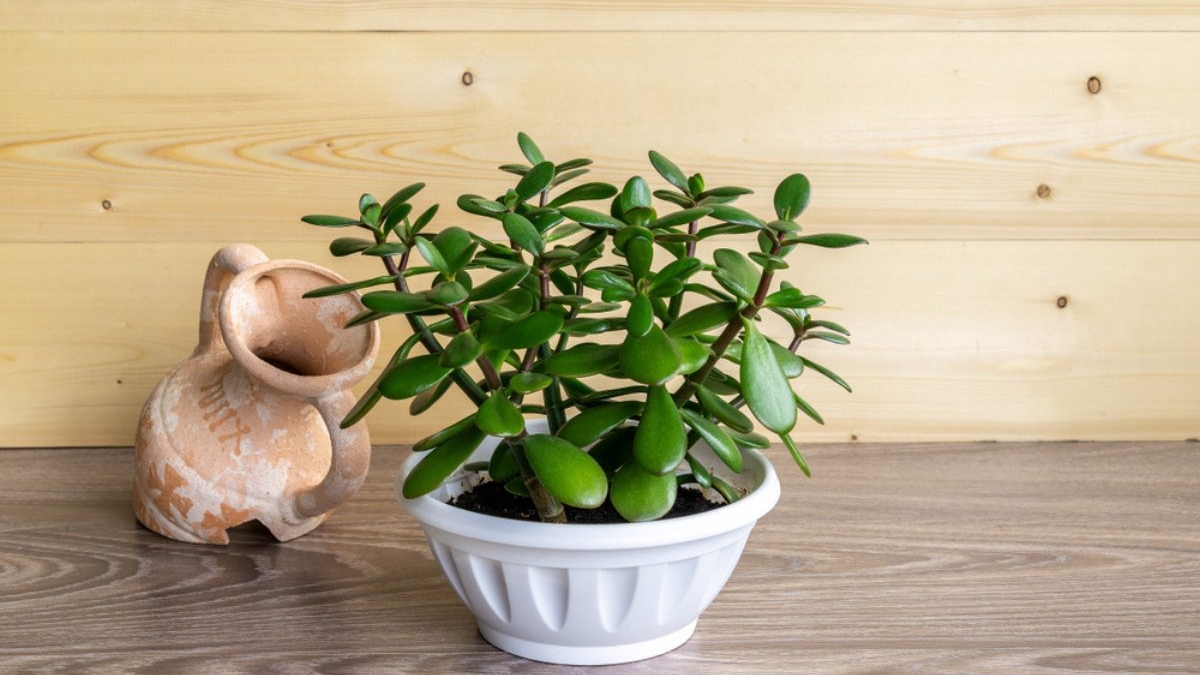




Leave A Comment